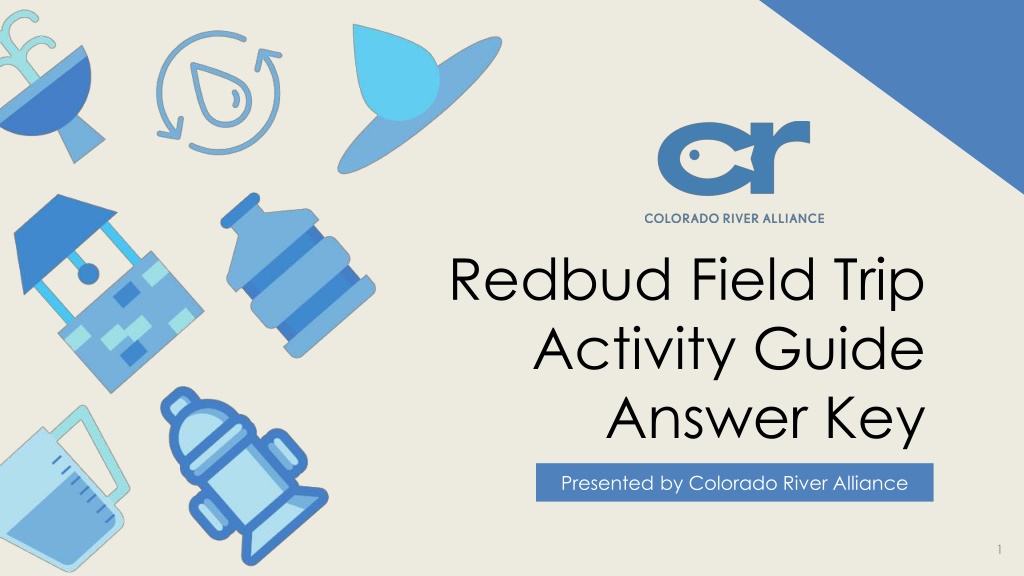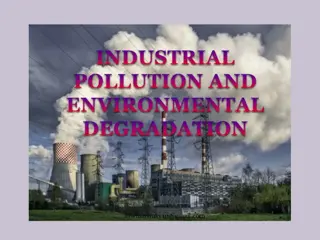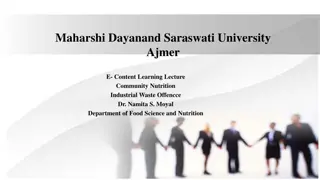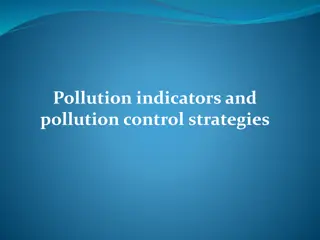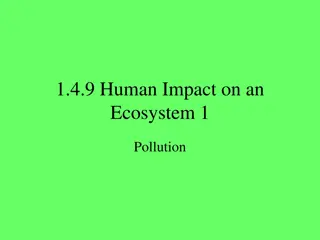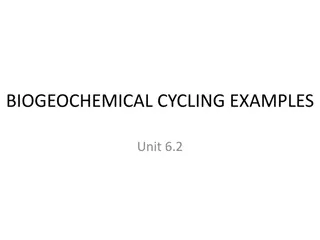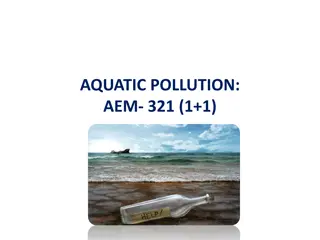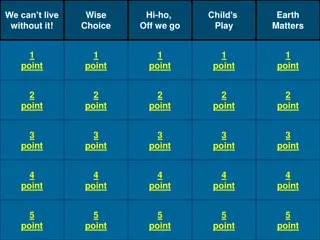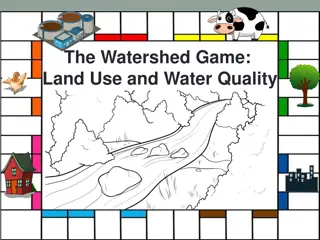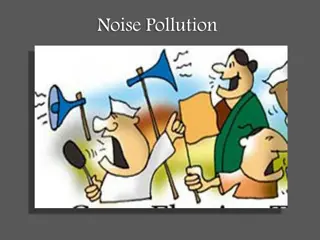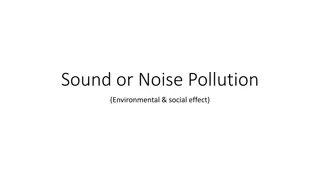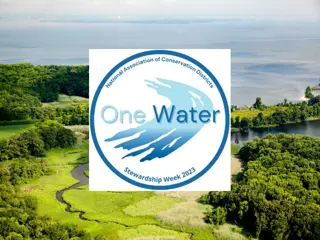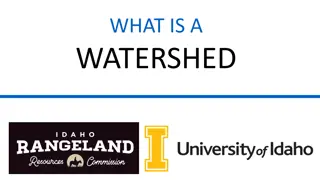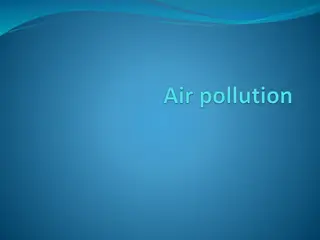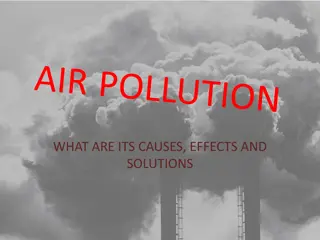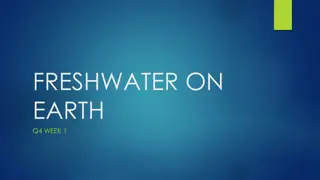Understanding Pollution Impact on Watersheds
The content covers the impact of human activities on watersheds, focusing on pollutants like oil, nutrients, and bacteria. It emphasizes the importance of protecting watersheds and offers solutions to prevent pollution. Examples include oil runoff affecting drinking water sources and nutrient pollution causing algae blooms. Suggestions for prevention range from proper car maintenance to using native plants in landscaping. Overall, it highlights the significance of safeguarding watersheds for environmental health.
Download Presentation

Please find below an Image/Link to download the presentation.
The content on the website is provided AS IS for your information and personal use only. It may not be sold, licensed, or shared on other websites without obtaining consent from the author. Download presentation by click this link. If you encounter any issues during the download, it is possible that the publisher has removed the file from their server.
E N D
Presentation Transcript
Redbud Field Trip Activity Guide Answer Key Presented by Colorado River Alliance 1
Lets review what we learned in the video! Fill in the blanks with answers from the word bank below. The Colorado River is the longest river in Texas. 1. 2. Sometimes heavy rains cause flooding, or we experience drought, a period with very little rainfall. 3. Texans needed the river to be more reliable, so in the 1930s LCRA began building dams. 4. Floodgates on the dams allow us to control lake water levels. 5. Hydroelectricity is produced by the dam when water flows through it. 6. By building dams along the river, LCRA created man-made lakes. Word Bank lakes Floodgates flooding dams Colorado drought Hydroelectricity 2
Everyone lives in a Watershed! In the video, we learned that a watershed is an area of land that drains water into one location, like a lake or river. The video also mentioned that it s important to have a healthy watershed. What do you think a healthy watershed would look like? Brainstorm THREE types of pollution that could impact a watershed: 1. ___________________ 2. ___________________ 3. ___________________ bacteria (animal waste), dirt, nutrients (fertilizer) Possible answers: trash, chemicals, oil, 3
Pollution and Watersheds Human activity affects the health of our watersheds. Read the 6 situations on the next page(s), and answer the following questions for each situation: 1. What is the pollutant (substance that makes land, water, air, etc., dirty and not safe or suitable to use.) and why is it a problem? 2. What could the person(s) have done differently to protect the watershed? 4
Pollution and Watersheds Situation 1 The pollutant is oil. It s a problem because oil can run off the street into nearby creeks, lakes, and rivers, like the Texas Colorado River where we get our drinking water from! Although we treat the water before it gets to our homes, the more polluted the water, the more time and resources it takes to clean it. And let s not forget about the plants & animals that use this water too! To prevent this, Roger could have fixed his car or taken public transportation, rode his bike, etc. Situation 4 The pollutant is the nutrientsin the fertilizer. It s a problem because when fertilizer runs off into surface water, the nutrients cause algae blooms to grow in the water. Algae blooms block sunlight and suck up all the oxygen in the water that fish and other plants need to survive. Mike could have used mulch, landscaped his lawn with native plants that don t require fertilizers, or at least read the directions to not use so much fertilizer. Situation 5 The pollutant is the bacteriain the cow manure (poop). It s a problem because bacteria like E.coli in animal waste can make us very sick. Although we treat the water before it gets to our homes, the more polluted the water, the more time and resources it takes to clean it. And let s not forget about the plants & animals that use this water too! Farmer Fred should have a barrier around the feed lot to block manure from entering the creek, or move his cattle away from the creek. Situation 2 The pollutant is dirt. It s a problem because when there is too much dirt or sediment in our water, it can smother fish eggs and aquatic habitats, and cause problems at our drinking water treatment plants. To prevent this, Clay should have a barrier around the construction site to block dirt from entering the storm drains. Situation 3 The pollutant is the chemicalsin the paint. It s a problem because the paint on the street can run off the street into nearby creeks, lakes, and rivers, like the Texas Colorado River where we get our drinking water from! Although we treat the water before it gets to our homes, the more polluted the water, the more time and resources it takes to clean it. And let s not forget about the plants & animals that use this water too! To prevent this, Peggy should have disposed of the paint properly and not left it in the street. Products like paint/paint thinner can t just be thrown in the garbage Situation 6 The pollutant is trash. It s a problem because after the rainstorm comes through, the trash will run off into nearby surface water like the Texas Colorado River where we get our drinking water from! Although we treat the water before it gets to our homes, the more polluted the water, the more time and resources it takes to clean it. And let s not forget about the plants & animals that use this water too! The festival goers should have used the proper 5
Water Conservation The average family uses about 320 gallons of water each day! How does all that water add up? Make your best guess to match the gallon amounts on the right with the water-wasting activity on the left. C Brushing your teeth with the tap running A. 15 gallons D Taking a bath with the tub full B. 2,500 gallons E Taking a 15-minute shower C. 4 gallons F Washing clothes in the washing machine D. 20 gallons A Washing dishes in the dishwasher E. 38 gallons B Watering the lawn F. 45 gallons 6
Check your answers from the previous page with the chart below. Were you surprised? How can we conserve (use less) water when doing these activities? Fill in this column with your ideas. Water WASTING Activity Gallons Used Ways I Can REDUCE Water Use Brushing teeth with the tap running Taking a bath with the bathtub full Taking a 15-minute shower 4 Turn off the tap 20 Only fill tub halfway 38 Take a 5-minute shower Washing clothes in the washing machine 45 Wait until you have a full load Washing dishes in the dishwasher Watering the lawn 15 Wait until you have a full load 2,500 Only water when the sun is down, plant native plants, use a rain barrel Now, let s put those ideas into action by completing the Colorado River Pledge on the next page. Post it on your fridge or somewhere else in your home to remind your family every day to conserve water! 7
